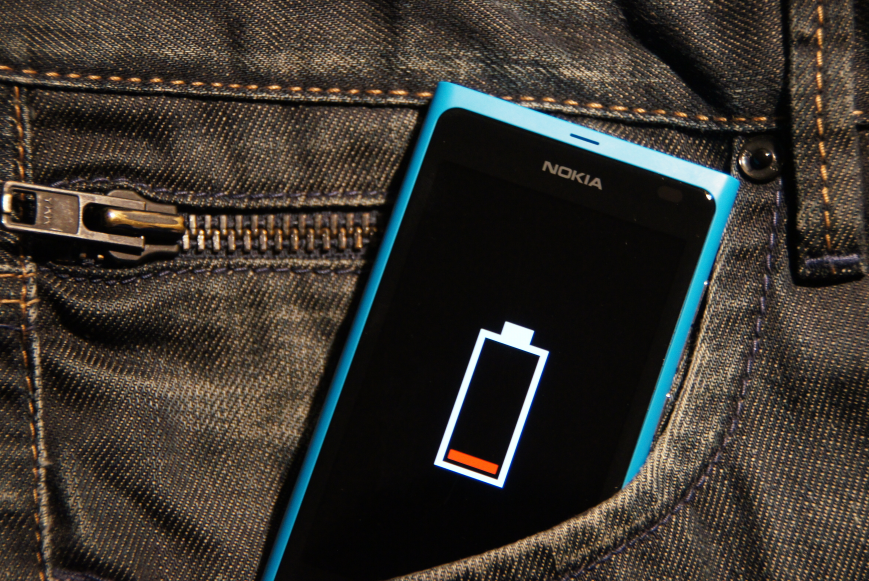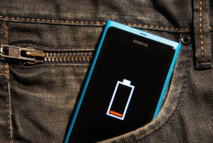Major smartphone’s battery eaters are heavy games and apps downloading data on the background. However, your device’s charge may end up somewhere in the middle of the day, even if you have not opened any apps or games, but continued to monitor the social networks’ updates.
According to statistics of battery consumption, in most cases, the champion is Facebook company’s applications: the social network, Messenger and Instagram. Apart from these, your phone’s battery is eaten by Google with Google Now assistant, who constantly refer to the information from the device.
Developers of Facebook’s applications have repeatedly faced accusations of wasteful use of resources in smartphones and assured that they are working on this problem. However, the struggle with the application’s "voracity" is still ongoing.
In October 2015, many users complained that the iOS consumed too many resources in the background. The chief engineer Ari Grant explained the situation: the problem primarily concerns "processor looping" in the network code.
It is like a child in a car, which is constantly bothering parents with the question "Are we there yet?". Because of this, the application uses more battery power than necessary.
Another problem occurs during video playback. Once the application was closed, the video’s audio track continued to work, soundless. Obviously, this also entailed a more rapid discharge of the battery. Then, the developers had assured that the problem will be eliminated.
However, despite numerous attempts to optimize the applications’ work, they continue to occupy the top lines in the list of the most power-hungry processes.
Guardian’s correspondent Samuel Gibbs told about his experience in switching from Facebook mobile client to the web version. According to him, this step let him save about 15% of the charge. His friends, who tried a similar experiment, also pointed a significant increase in work time.
Users of the social network, having decided to refuse the application for the sake of the experiment, went to the website’s mobile version. In this case, many said that the site’s mobile version is easy to use and does not differ in functionality.
A similar Android experiment also yielded results. Gibbs tried to do the same on his Nexus 6P and received more than 20%-increase to the battery charge’s lifetime.
Similar experiments were also carried out by other users - in particular, at Reddit.
So, one of the users compared the smartphone’s functioning with the app and without it, and came to the conclusion that, on average, you can save up to 15% of the charge just refusing the mobile client.
Nevertheless, most people are not ready to abandon Facebook and Messenger applications.
If notifications from social networks are vital to you, here are some universal tips to extend the smartphone’s operating time.
The first is to disable the automatic adjustment of brightness and set it to a lower value. You should also refrain from consuming processes and running games, and use browser instead of mobile applications.
Airplane Mode can often save the battery in a case of emergency, when you need the phone with catastrophically low charge to work for some more time.
These solutions are applicable in the case of long-distance travel or absence of an external battery on hand. In everyday life, constant surveillance of the brightness level and a number of background processes is not required, as the majority of smartphones capable of work the daytime.
According to statistics of battery consumption, in most cases, the champion is Facebook company’s applications: the social network, Messenger and Instagram. Apart from these, your phone’s battery is eaten by Google with Google Now assistant, who constantly refer to the information from the device.
Developers of Facebook’s applications have repeatedly faced accusations of wasteful use of resources in smartphones and assured that they are working on this problem. However, the struggle with the application’s "voracity" is still ongoing.
In October 2015, many users complained that the iOS consumed too many resources in the background. The chief engineer Ari Grant explained the situation: the problem primarily concerns "processor looping" in the network code.
It is like a child in a car, which is constantly bothering parents with the question "Are we there yet?". Because of this, the application uses more battery power than necessary.
Another problem occurs during video playback. Once the application was closed, the video’s audio track continued to work, soundless. Obviously, this also entailed a more rapid discharge of the battery. Then, the developers had assured that the problem will be eliminated.
However, despite numerous attempts to optimize the applications’ work, they continue to occupy the top lines in the list of the most power-hungry processes.
Guardian’s correspondent Samuel Gibbs told about his experience in switching from Facebook mobile client to the web version. According to him, this step let him save about 15% of the charge. His friends, who tried a similar experiment, also pointed a significant increase in work time.
Users of the social network, having decided to refuse the application for the sake of the experiment, went to the website’s mobile version. In this case, many said that the site’s mobile version is easy to use and does not differ in functionality.
A similar Android experiment also yielded results. Gibbs tried to do the same on his Nexus 6P and received more than 20%-increase to the battery charge’s lifetime.
Similar experiments were also carried out by other users - in particular, at Reddit.
So, one of the users compared the smartphone’s functioning with the app and without it, and came to the conclusion that, on average, you can save up to 15% of the charge just refusing the mobile client.
Nevertheless, most people are not ready to abandon Facebook and Messenger applications.
If notifications from social networks are vital to you, here are some universal tips to extend the smartphone’s operating time.
The first is to disable the automatic adjustment of brightness and set it to a lower value. You should also refrain from consuming processes and running games, and use browser instead of mobile applications.
Airplane Mode can often save the battery in a case of emergency, when you need the phone with catastrophically low charge to work for some more time.
These solutions are applicable in the case of long-distance travel or absence of an external battery on hand. In everyday life, constant surveillance of the brightness level and a number of background processes is not required, as the majority of smartphones capable of work the daytime.



















